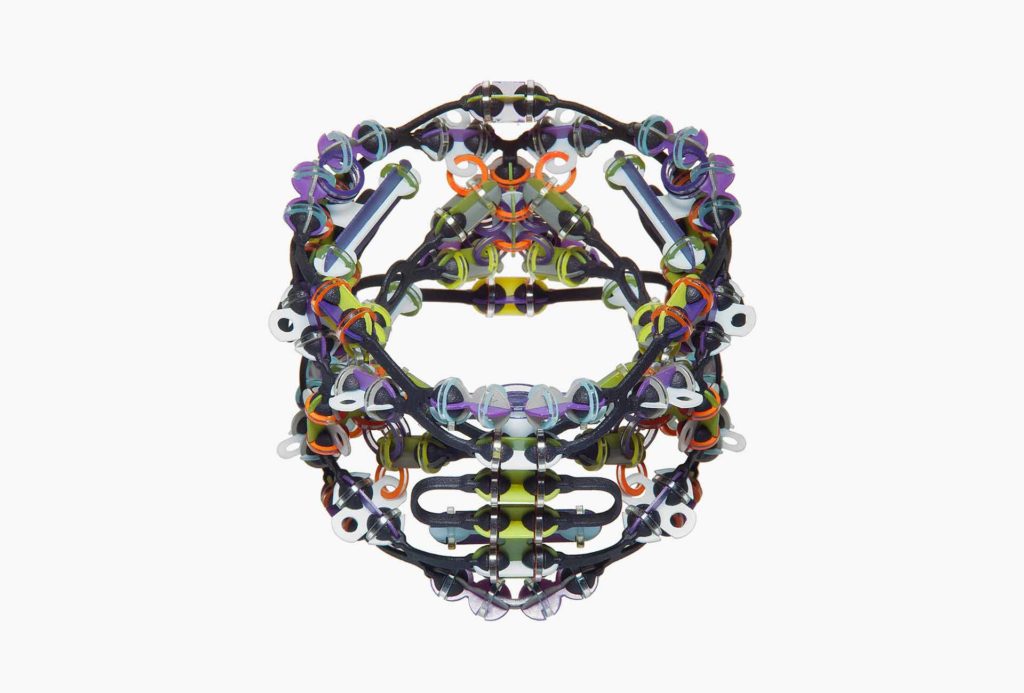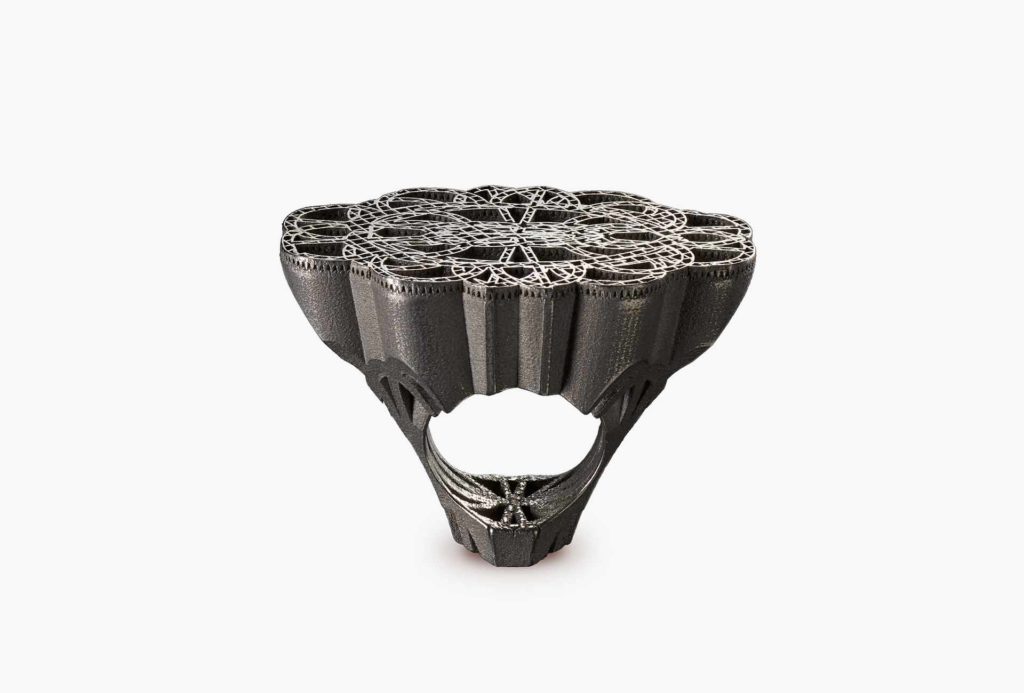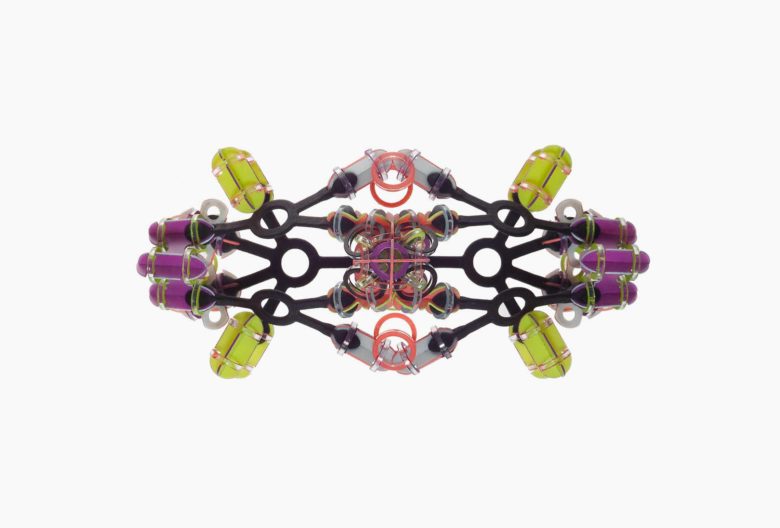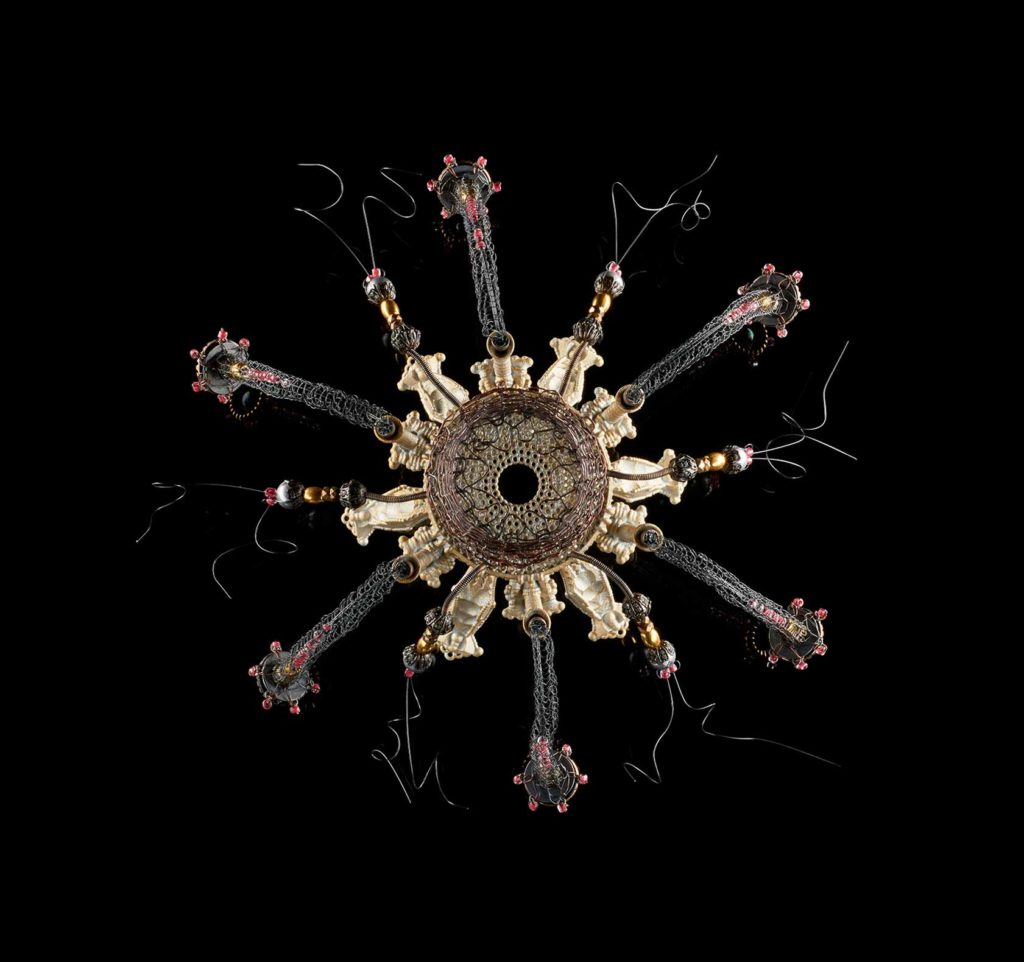Within the context of contemporary visual art, digital technology raises some interesting questions. For instance, how does modern technology relate to the artisanal efforts of the artist, and what do new techniques do to the magic and mystery of making and creating? What does modern technology mean to artistic practice, and what motivates artists to integrate these new techniques into their work? Beate Eismann and Svenja John use 3D printing, laser cutting and computer-controlled design in their works. A high-quality 3D printer is included in the exhibition, allowing visitors to familiarise themselves with an important part of Svenja John and Beate Eismann’s professional practice.

Svenja John, bracelet Lalibela, 2018. Polycarbonat Makrolon®, Nylon, 3D-Printed, Acrylic Paint. Supported by Kegelmann Technik. Photo Ludger Paffrath

Beate Eismann, Ring Ice Flower in Titanium, 2015. 3,5 x 3,5 x 5 cm. Photo Sascha Linke
The thirtieth anniversary of 3D printing, CODA Museum’s interest in jewellery and the artistic quality of both artists prompted CODA to bring the work of Svenja John and Beate Eismann together in an exhibition. Although both artists focus on and are fascinated with digital processes and new techniques, John and Eismann have their own, distinct visual language.
Svenja John – a Pioneer of Digital Technology into Art
Svenja John (*1963) developed a preference for the precision of computer-controlled techniques. In 1994, John started working with Makrolon®, a polycarbonate that is frequently used in car manufacturing. Using CAD technology, she cuts the material into parts that then, after processing and colouring, become components of her complex, geometric jewellery. Rapid prototyping has been part of her work process since 2008. By employing 3D printers that can print different materials simultaneously, she combines design and the application of a variety of colours in one process. Svenja John’s over-sized arm jewellery or bracelets can be seen as sculptures that possess architectural characteristics. The principles of order and chance go side-by-side within these pieces of jewellery. In a state of rest, the shapes express movement. When worn, they show a convincing liveliness. Formal and technical solutions come together in harmony. However, it is not perfection, but esprit that determines the character of John’s jewellery. “I do not use synthetic material in a decorative way or as a cheap substitute. Rather, I try to understand synthetic material for its own advantageous properties and its unique character. Synthetic material can be colourful and garish, luminously transparent or gracefully translucent. It can be sleek and cold or with fine pores and buffed. As a material it is practical or the mediator of a tactile moment.”

Svenja John, brooch Topanga, 2017. Polycarbonat Makrolon®, Nylon, 3D-Printed, Acrylic Paint. Supported by Kegelmann Technik. Photo Ludger Paffrath

Svenja John, necklace Boise, 2017. Polycarbonat Makrolon®, Nylon, 3D-Printed, Acrylic Paint. Supported by Kegelmann Technik. Photo Ludger Paffrath
Beate Eismann – Printing Techniques from the Past and the Present
Beate Eismann (1969) started focussing on digital design processes and production methods in 2006. Over the years, exploring their potential has become an essential part of her work. By using printing plates for her jewellery and combining them with modern technology, Eismann raises questions about the relationship between original and copy. “Designing in 3D fascinates me and enables me to ‘draw in space’. I find room to experiment in the interplay between the artisanal and the computer-controlled, and in the combining of traditional and new materials. My jewellery is the result of combinations that seem impossible at first. Computer-controlled, industrial production methods combined with the personal and artisanal, for example. The result is hybrid, in terms of materiality and aesthetic expectations.” Inspired by a research project that she was part of in 2016, Eismann explores and experiments with smart materials that she combines with 3D printing. Smart materials are materials that can undergo significant changes in terms of form and appearance due to variations in temperature, acidity or humidity level and through, for instance, the application of electric and magnetic fields.

Beate Eismann, Sculpture Growth, 2010. Plastic, patinated silver, 22 x 16 x 11,8 cm. Photo Artist

Beate Eismann, Thermal SMA: study on materials I, 1 of 5 objects, 2017. Plastic, silver, glass, thermal shape memory alloy. Object funded by SmartTransNet e.V. through a scholarship, corpus height 9 cm. Photo Sascha Linke
3D printer Stratasys Objet 260 Connex 3 in Future Form
Visitors of Future Form have the unique opportunity to see the professional 3D printer Stratasys Objet 260 Connex 3 in action. This Multi Poly Jet 3D printer uses a technique where various print heads spray minuscule drops of liquid polymer on a platform, layer by layer. As soon as the material is applied, it is hardened with UV light, which causes the new layer to adhere to the previous one. Multi Poly Jet Printing enables the creation of objects consisting of various materials and colours.
The exhibition Future Form in CODA Museum takes the visitor on a journey through the development of the two artists and shows how they both developed their own unique signature. Future Form also shows how John and Eismann bring together the artisanal and digital technologies and modern techniques. Moreover, Future Form ties in with the plans CODA develops and translates into CODA Experience Lab, an innovative lab for makers, where highly advanced technologies and developments are shown, tested and applied. CODA Experience will be opened in 2018.
- —
-
Coda Apeldoorn
Vosselmanstraat 299
7311 CL Apeldoorn
Netherlands - Opening
Sunday 6 May 2018 at 2.30 pm - Link